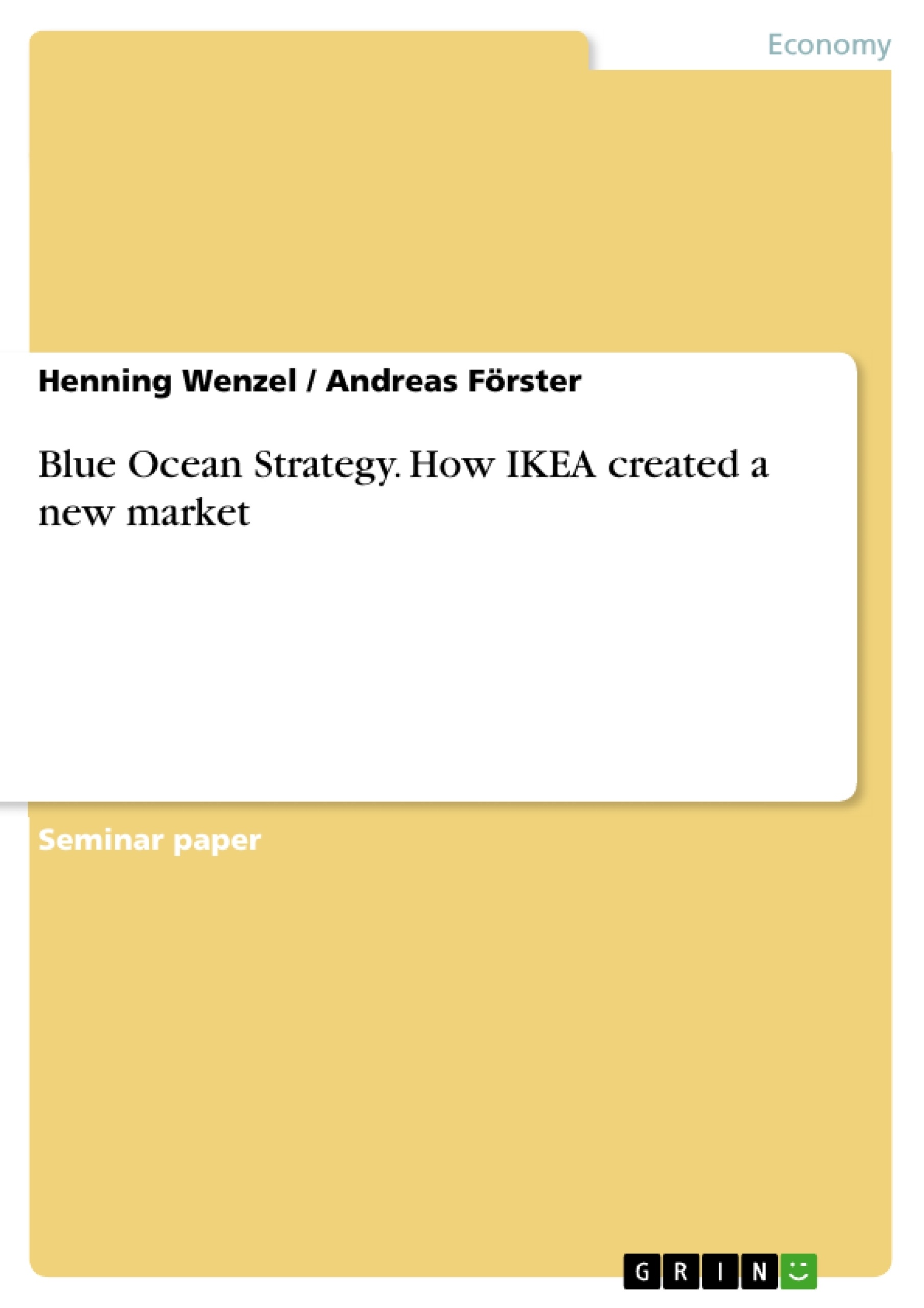This assignment describes the Blue Ocean Strategy as an innovation concept within the corporate strategic management on the example of IKEA. This is to be done by analysing the framework and the tools of the Blue Ocean Strategy by considering both basic principles and practical implementation.
The Blue Ocean Strategy aspires to turn strategic management on its head by putting “value innovation” in front of “competitive advantage” as the basically goal to create consumer demand and exploit untapped markets. When IKEA entered the market in the late 1950s they focused on the important factors that buyer value and make them to co-producers by implementing unique do-it-yourself mentality. Therefor IKEA combined differentiation with a cost leadership and created a blue ocean helping the founder Ingvar Kamprad to become one of the wealthiest people in the world. As the current business world continues moving towards a faster, more global environment in which there are more and more competitors trying to grab a piece of the pie, the need to develop blue oceans has never been greater.
Inhaltsverzeichnis (Table of Contents)
- Executive Summary
- Table of Contents
- List of Abbreviations
- List of Figures
- 1 Introduction
- 1.1 Problem Definition
- 1.2 Objectives
- 1.3 Methodology
- 2 Strategy
- 2.1 Aims and Characteristics
- 2.2 Corporate and Business Strategy
- 2.2.1 Marked-based View
- 2.2.2 Resource-based View
- 3 Blue Ocean Strategy
- 3.1 Basic Approach
- 3.1.1 Accruement
- 3.1.2 Red and Blue Oceans
- 3.1.3 Value Innovation
- 3.2 Analytical Tools and Frameworks
- 3.2.1 Strategy Canvas
- 3.2.2 Four Actions Framework
- 3.2.3 Three Characteristics of a Good Strategy
- 3.3 Six Path Framework to find Blue Oceans
- 4 IKEA and BOS
- 4.1 Facts and Figures
- 4.2 Business Model
- 4.3 Market Overview
- 4.4 IKEA's Blue Ocean Strategy
- 4.4.1 Strategy Canvas
- 4.4.2 ERRC Grid
- 5 Critical Analysis
- 5.1 Sustainability
- 5.2 BOS versus Marked-based View
- 5.3 BOS versus Resource-based View
- 5.4 Limitations of the BOS
- 6 Conclusion
- Bibliography
Zielsetzung und Themenschwerpunkte (Objectives and Key Themes)
This assignment examines the Blue Ocean Strategy as an innovative concept within the realm of corporate strategic management, utilizing the example of IKEA. The objective is to analyze the framework and tools of the Blue Ocean Strategy, encompassing both its fundamental principles and practical implementation. The analysis aims to illustrate how IKEA's success stems from its application of the Blue Ocean Strategy.
- The concept of "value innovation" as a core principle of the Blue Ocean Strategy
- The distinction between "red oceans" and "blue oceans" in strategic competition
- The analytical tools and frameworks employed in the Blue Ocean Strategy, such as the Strategy Canvas and the Four Actions Framework
- The application of the Blue Ocean Strategy by IKEA, including its strategy canvas and ERRC grid analysis
- A critical analysis of the Blue Ocean Strategy's strengths and limitations
Zusammenfassung der Kapitel (Chapter Summaries)
The introduction lays out the problem definition, objectives, and methodology of the assignment, framing the analysis of IKEA's Blue Ocean Strategy. Chapter 2 delves into the broader context of strategy, covering its aims, characteristics, and the marked-based and resource-based views of corporate and business strategy. Chapter 3 presents the core principles and tools of the Blue Ocean Strategy, including value innovation, red and blue oceans, the strategy canvas, the four actions framework, and the six path framework for finding blue oceans.
Chapter 4 focuses on IKEA, examining its business model, market overview, and its implementation of the Blue Ocean Strategy, showcasing its strategy canvas and ERRC grid analysis. Chapter 5 delves into a critical analysis of the Blue Ocean Strategy, addressing its sustainability, comparing it to the marked-based and resource-based views, and exploring its limitations.
Schlüsselwörter (Keywords)
The key terms and concepts explored in this assignment include blue ocean strategy, value innovation, competitive advantage, red oceans, blue oceans, strategy canvas, four actions framework, ERRC grid, IKEA, business model, market overview, and sustainability.
- Quote paper
- Henning Wenzel (Author), Andreas Förster (Author), 2013, Blue Ocean Strategy. How IKEA created a new market, Munich, GRIN Verlag, https://www.grin.com/document/315511




